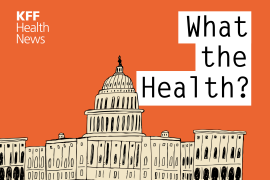UNAIDS/WHO Lower Global HIV/AIDS Estimates
UNAIDS and World Health Organization have lowered their estimates of how many people are living with HIV/AIDS worldwide, Reuters/New York Times reports. According to the report, which is scheduled for release this week, about 33 million people worldwide are living with HIV/AIDS, compared with an estimate of nearly 40 million in 2006. The U.N. bodies said that better methods of data collection and increased data availability from countries show that HIV/AIDS is not quite as widespread as previously thought (Reuters/New York Times, 11/20). The report also found that about 2.5 million people will become newly infected with HIV this year, a 40% decrease from last year's estimate primarily because of methodological changes used to derive these estimates but also to more recent reductions in incidence, the Los Angeles Times reports (Chong/Maugh, Los Angeles Times, 11/20). New cases peaked in the late 1990s and have been declining since 2001 -- when it is estimated that about 2.2 million people in sub-Saharan Africa contracted HIV, compared with an estimated 1.7 million in the region this year -- the report says.In addition, the report found that the number of AIDS-related deaths have declined somewhat since 2005 in part because access to antiretroviral drugs has expanded. The report estimated that about 2.1 million people worldwide will die of AIDS-related causes in 2007 (Donnelly, Boston Globe, 11/20). Although the number of new cases has decreased, the number of people worldwide living with HIV/AIDS has increased as people are living longer with HIV, new infections are continuing, and there is general population growth, the study says. The percentage of adults worldwide living with HIV/AIDS has remained constant at about 0.8%, according to the study (McNeil, New York Times, 11/20).
According to the Los Angeles Times, although the number of new cases has declined in some countries in Eastern and Western Africa because of widespread changes in sexual behavior, the "bulk of the apparent decrease" is because of improved sampling methods. Earlier estimates often were taken from pregnant women at prenatal clinics who were more likely to live in urban areas and be sexually active than women in the general population (Los Angeles Times, 11/20). The new data were taken from national population estimates in 30 countries with high HIV prevalence that involved family interviews and blood tests, the Wall Street Journal reports (Chase, Wall Street Journal, 11/20).
The report also says that revised estimates for India, released earlier this year, accounted for a significant part of the decrease in global numbers. "The single biggest reason for this reduction was the intensive exercise to access India's HIV epidemic, which resulted in major revision of that country's estimates," the report says. India's revisions, as well as those in five other countries, together accounted for 70% of downward change in the prevalence estimate between last year's published figure and this year's (Reuters/New York Times, 11/20).
According to Paul DeLay -- director of evidence, monitoring and policy for UNAIDS -- another significant reason for the decrease in new cases is a decrease in the number of sex partners in high-prevalence areas in Southern Africa. DeLay added that consistent condom use among high-risk groups, including commercial sex workers; treatment of sexually transmitted infections; and male circumcision also contributed to the decline.
Reaction
DeLay said that experts are "seeing" the "effect" of program interventions designed to fight the spread of HIV. "In some parts of sub-Saharan Africa, the evidence is pretty convincing that the epidemic has turned," DeLay said, adding, "We have up to five years of data. In other areas, we are just starting to see a change with the numbers coming down" (Boston Globe, 11/20).
Despite the decrease in figures, the report still shows that the HIV/AIDS pandemic is widespread and that efforts to fight the disease should be increased, UNAIDS officials said. "These improved data present us with a clearer picture of the AIDS epidemic, one that reveals both challenges and opportunities," UNAIDS Executive Director Peter Piot said in a statement. He added, "Unquestionably, we are beginning to see a return on investment -- new HIV infections and mortality are declining and the prevalence of HIV leveling. But with more than 6,800 new infections and over 5,700 deaths each day due to AIDS, we must expand our efforts in order to significantly reduce the impact of AIDS worldwide" (Reuters/New York Times, 11/20).
James Chin of the University of California-Berkeley said UNAIDS and WHO have "been overemphasizing and exaggerating" the impact of the virus "in an effort" to increase global funding to fight the disease. "It's getting closer to what it ought to be, but it's still high," Chin said. DeLay said it was "absurd" to think the data had been exaggerated, adding that it would "technically impossible to somehow rig the numbers" (Los Angeles Times, 11/20). U.N. officials said the revised data stem from better measurements rather than from shifts in the epidemic, adding that they continually seek to improve monitoring of the pandemic (Timberg, Washington Post, 11/20).
Some HIV/AIDS advocates expressed concern that the new data will lead to a decrease in global funding to fight the virus (New York Times, 11/20). Paul Zeitz, executive director of the Global AIDS Alliance, said that although the "overall prevalence of AIDS" has stabilized, the global health community is "still seeing millions of new infections" (Cheng, AP/Philadelphia Inquirer, 11/19). Zeitz added that "huge resources" are needed "to win the battle" against HIV/AIDS (New York Times, 11/20).
The report is available online.






